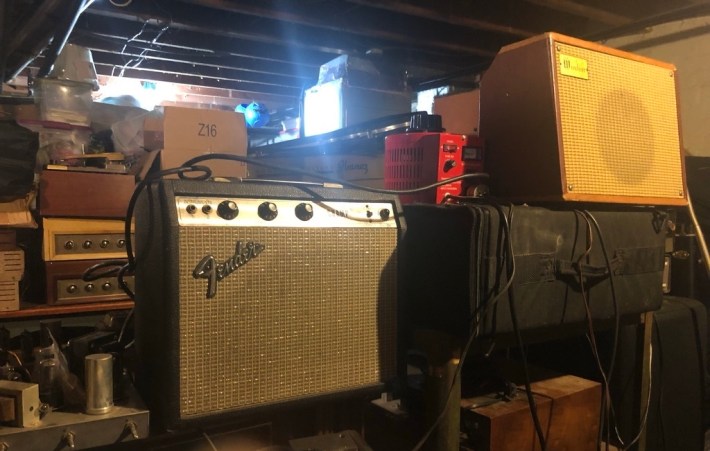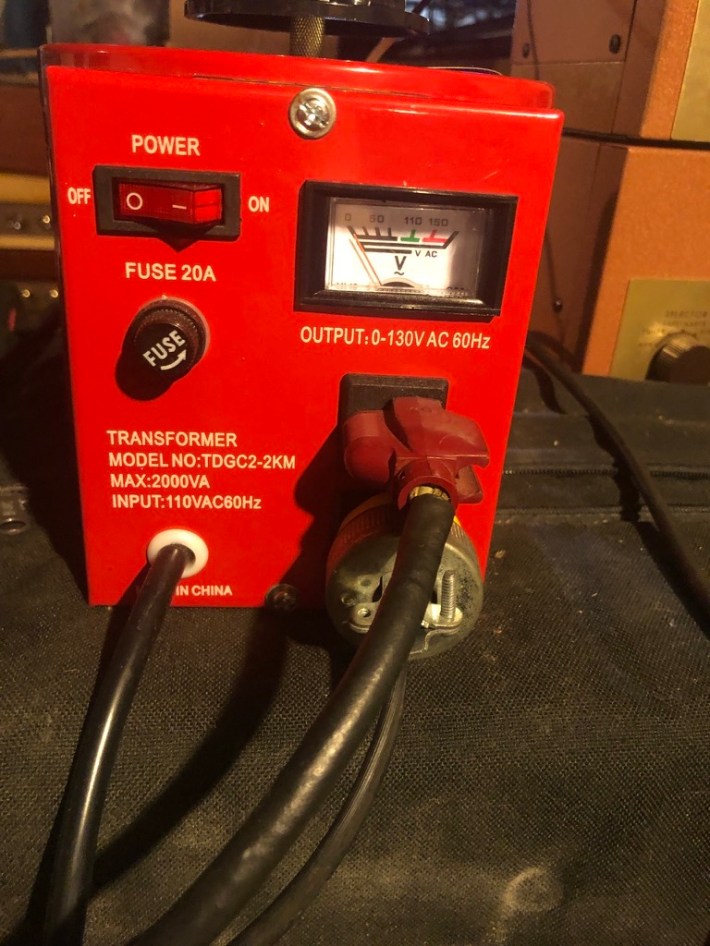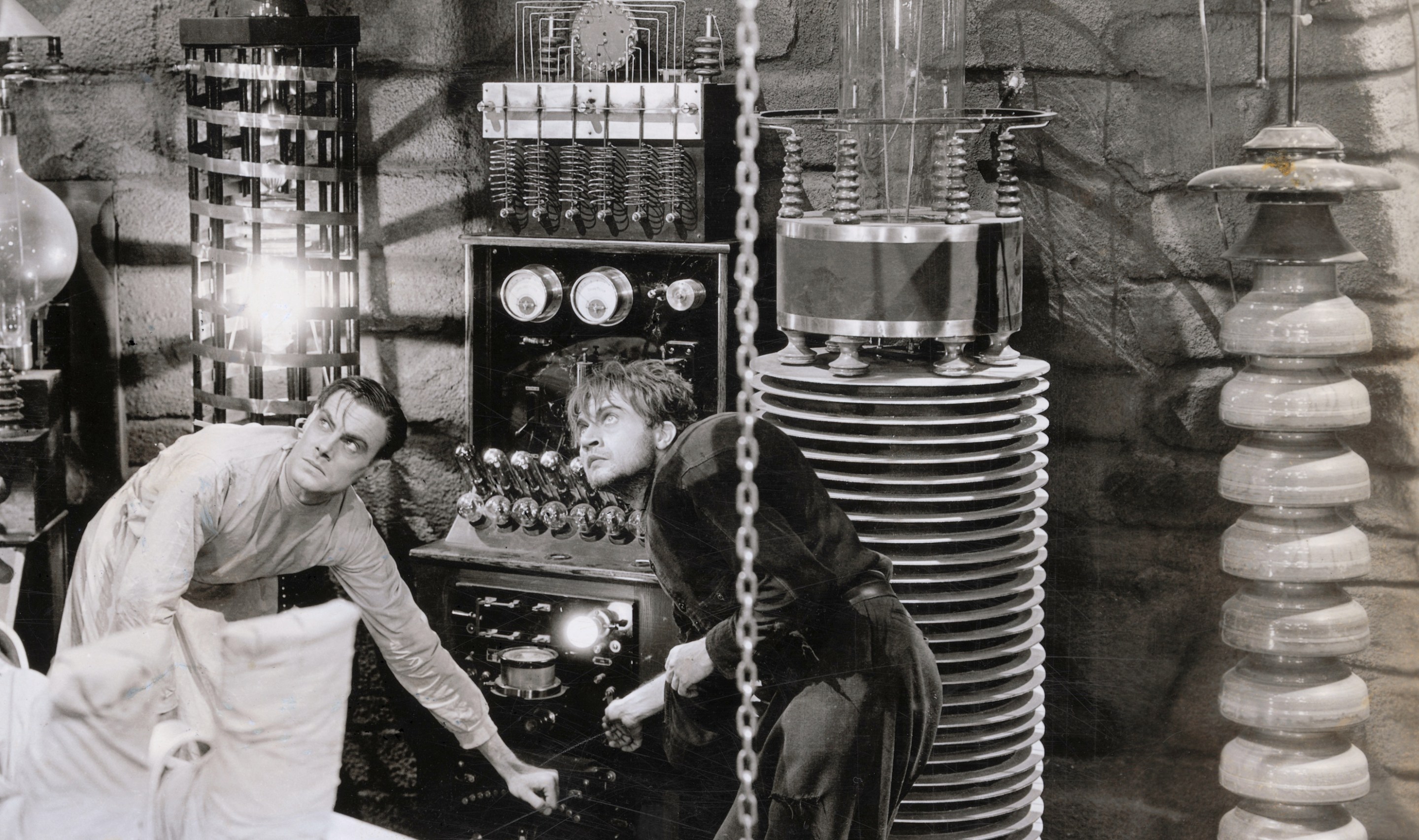I have an amplifier problem. Namely: I have too many of them. Like, more amps than I could ever use. I love amps, so there are worse problems to have. But if you've been in my basement, surrounded by a claustrophobia-triggering number of old amps in need of TLC, you know it’s a problem.
For most of my years, I've felt under-equipped intellectually and otherwise to work on anything electronic, while also being obsessed with electronics. That's a nasty combo. But recently I have summoned the will to tinker. I've brought dozens of amplifiers from my past, including many I'd either forgotten about, back to life. My '60s-vintage Fender Champ, for example, roars once more! Merely attempting to make unusable things usable again without (knock on wood!) electrocuting myself or burning down my house would qualify as a big win; actually succeeding as an amp resurrectionist has been wondrous.
The first step in my transformation came with my purchase of a variac. That's a variable transformer and power supply—with which I had a brief but amazing fling long ago that I'll get into later—known to have restorative powers over old and underused electronic devices. And, again, I've gotta lotta those.
My amp problem dates back to the mid-1980s, and is an offshoot of my guitar problem. I focused on older models powered by vacuum tubes, also called valves, which I and lots of similarly afflicted tubers will swear provide every musical signal with easier-to-hear-than-describe qualities called “warmth” and "dirt." I shunned '70s or newer “solid state” guitar amps, which deliver comparatively clean and tinny tones from transistors, and left me cold. I fell head over heels for every new-to-me old tube amp. Yet because each amp I acquired sounded different yet at least as wonderful as the last, I couldn't stop collecting. Fruits from the first few years of my tube amp affliction include an Ampeg Gemini II, an Ampeg Reverberocket II, two Ampeg B-15s and an Ampeg VT-40 that turns "Kumbaya" into "Sympathy for the Devil." And by no means did I ever focus on Ampegs or any one amp brand. If you have a favorite guitar amp, I probably have two of them.

My tube disease metasticized to hi-fi amps around the turn of the century. I'd rescued a working 1959 Fisher ST-610 stereo console that had been abandoned. My father, who died when I was in high school, was a Fisher hi-fi guy, so when I saw the logo on that mid-century console just sitting on a suburban sidewalk I figured it had to have some value. So I loaded the massive piece of aural furniture into my compact car and gave it a new home. It's kind of cliché in tube circles, but once I heard Miles Davis's Kind of Blue, an album that’s to 1950s jazz what Led Zeppelin IV is to ‘70s hard rock, through that tube console, solid state hi-fi was in my rearview mirror for good. Soon enough I went back to the house I grew up in, where my mom still lived, and got my dad's Fisher X101C stereo amp out of the attic and had it professionally repaired.
The best/worst chapter in my relationship with tube amps came when I found out that pretty much all the public address systems, record players, and film projectors used in schools in the mid-20th century had onboard tube amps that even an idiot (me!) could repurpose into great guitar and hi-fi amps. Plus they were built to last and were so cool-looking! My discovery came at a time when these things were considered obsolete and could be found for peanuts at every yard sale and, just my luck, just as online sales outlets like eBay and Craigslist were mainstreaming. I sold next to nothing during my acquisition binge; I went from hobbyist to hoarder. As with my similarly unwieldy guitarsenal, my electronics stash became more a stockpile than a collection. (Along with the Fisher ST-610 console Fisher and the X101C, my hi-fi pile included a Fisher 500c receiver, a Fisher ST-810 console, a Fisher 70-A, and three Fisher 30-A mono blocs; again, even with the paternal connection, I never focused on Fishers more than any other brand.)
Then I had kids, and my own toy time dwindled away. My hoarded amp horde, particularly the hi-fi portion, began getting ignored. I learned the hard way that tube amps are use-it-or-lose-it devices: Internal components called capacitors, which store voltage required for an amp’s proper operation, dry up when there’s no electricity flowing through them, and eventually will stop holding the proper charge. Firing up an amp with bad caps can lead to catastrophic failure. I’ve unboxed and tried powering up many an underused amp only to get some sparks and maybe a blown fuse, but no sound other than an annoying and totally non-musical hum.
The surest way to avoid ruining a hibernating amp is to replace all old capacitors before plugging it in again. But I’d never attempted any amp fix more complicated than swapping a good tube in for a visibly blown one, or soldering a detached wire back in place. The sort of surgical operation caps replacement requires remains (for now) way over my head. And in Washington, D.C., where I live, it's easier to find a parking spot or good pizza than somebody still working on tube equipment at a reasonable price. I see a little of myself in Ken Fritz, a Richmond, Va., guy featured in a recent longform story in the Washington Post who died not long after meeting his lifelong goal of building a “$1 million stereo.” But a typical amp in my hi-fi pile cost me less than $100; a Sears Silvertone amp rescued out of a garbage pile always sounded like a million bucks to me. Yet, meld the lack of a repairer's gene and my cheapness, and any amp that went up in smoke was immediately worthless to me; in amp-obsessive parlance, a "boat anchor."
A trip to the basement around the holidays guilted me into action. The amount of boxes made the place downright suffocating, and I realized lots of them were loaded with amps I couldn't even remember using, let alone buying or rescuing. These amps were not only unplayable, but unsellable: Nobody's going to buy an amp that can't be powered up. Something had to be done. So, insecurities be damned. I remembered I'd had some luck salvaging an acoustic guitar last year. I decided to give the DIY route a shot with amps, too.

Enter the variac. I bought myself one for Christmas. This was a big step. See, variacs and I have a past. Return with me now to 11th grade at Falls Church High School, and my first day in Mr. Mosser’s electronics class. After a few sentences about electrical theory (I remember Ohm’s Law—"V=IR," or “voltage equals current times resistance”—was written on the chalkboard), he told us he wanted to start the school year off with a contest.
Mr. Mosser had a contraption about the size of a car battery set up at the front of the room, with wires coming from it that were attached to two metal wrenches. He explained that the thing was a variable voltage auto transformer, also called a variac, and it allowed users to control its voltage output. One of the wrenches was connected to the positive tap on the variac, and one the negative. By gripping an uninsulated wrench in each hand, he explained, we would complete an electrical circuit and the current could flow from the variac through our bodies. If you stick your finger into a wall socket, another act that would cause your body to serve as a circuit, you'll get around 120 volts immediately. Just as that sized jolt would cause an amp with bad capacitors to fail catastrophically, it's enough electricity to give anybody with a weak heart or in standing water a convulsion-filled death. But the variac started you out getting zero volts, and Mr. Mosser would slowly turn the dial of the gizmo clockwise to increase the charge. He’d keep upping the juice flowing until you gave him some sign to stop. Whichever of us took the most volts wins.
I was among the first contestants in this freak show of a contest, and while I don’t remember how many volts I took before I cried uncle, I know I cried it quick. I clearly recall being instantly petrified by the feeling of electricity coursing through me, and being creeped out by the internal rumbling sensations it caused, as well as the involuntary muscle contractions in my forearms and hands that curled my wrists and made it hard and likely impossible to drop the wrenches. I'd been gripped by Gary Gilmore's Supreme Court death penalty case a few years earlier, and suddenly his decision to choose a firing squad over the electric chair made good sense.
Most other kids gave up fast, too. My classmate and next door neighbor Bryan, however, had other ideas. Bryan was a skinny kid who probably weighed about 120 pounds, but had always been tough as balls; he could chug a beer in no time flat at 14 years old and his go-to house party trick was to roll down staircases. Bryan showed us all he’d rather go down like Gary Gilmore than not win this contest. Mr. Mosser turned the dial, and Bryan began curling up involuntarily and went down to one knee, but shook his head no every time Mr. Mosser asked if he was ready to quit. Bryan was in the fetal position by the time Mr. Mosser dialed the variac back to zero and declared him the winner. There was no prize up for grabs other than the awe of his classmates. And we were howling. This was the era of Evel Knievel, and we knew we'd witnessed canyon-jumping-level daredevil shit.
Nowadays, Mr. Mosser would be on the nightly news and probably in handcuffs for his teaching methods. Then again, I don’t remember many lessons given by any instructor at any level of my schooling, but, by god I remember the first day of electronics class. (Again, I can still recite Ohm's Law, but don't ask me to explain it.) Alas, the only other thing that stuck with me from the rest of the semester was that electronics class had more formulas than math class.
For better or worse, my unsatisfying run in electronics class didn’t stop me from being obsessed with actual electronics as a grown-up. That contest surely made me properly afraid of doing anything that might make me complete a circuit. Like, for example, actually digging into the guts of a busted amplifier. Hence my basement full of budding boat anchors. Mr. Mosser definitely re-entered my thoughts when I read on a message board for electronics obsessives about a simple, safe trick that could help get old amplifiers back in service without ruining them. Powering up an amplifier at low voltage through a variac sometimes does wonderful things to the compounds ("electrolytics") inside capacitors, and can actually reform the caps and reverse the damage caused by time and apathy. Slowly increasing the charge over 90 minutes or so can return a dormant amp to a usable state.

Since the variac arrived I’ve spent hours upon hours in the basement plugging many dozens of amps that I hadn’t seen in years, let alone heard, into my new gizmo. And hell if the thing hasn't worked just as the message boards said it would. The same device that left my buddy Bryan curled up on the floor all those years ago has helped get a big portion of my unused amp pile up and running. (I've only lost one amp in the process, a 1950s Harman Kardon mono hi-fi model that started frying at about 70 volts.) The payoff has been marvelous! The walls now echo with the warm and dirty tones of my dreams.
I know the variac deserves the real credit. But I still can’t believe that I had a role in this. I haven't figured out my next step yet. Best-case scenario is I overcome my hoarding compulsions and soon get to paring down the piles of now-working amps and find people who'll actually use them (and, well, pay for the privilege). I don't expect that will happen fast enough, though: While writing this story, I went on eBay and bought a tube amp carcass that somebody harvested from a 70-year-old Bell & Howell classroom projector. I now have five B&H amps.
So, I still have an amp problem. But, again, there are worse problems to have. I'm going to go listen to Miles Davis on my dad's amp now.






